Overtone In Closed And Open Pipe
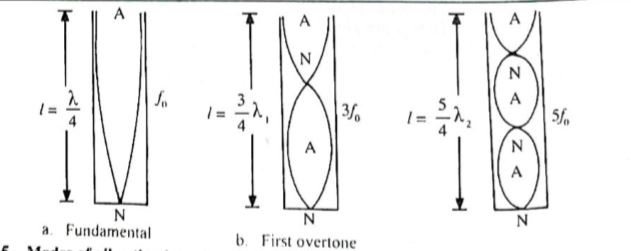
The fundamental frequency is the lowest frequency but the strongest audible frequency. The overtones are higher frequencies but are quieter or softer than the fundamental note. So, I will define overtone, write the formula for overtone in open and closed pipe in this article.
Overtones are the next higher frequencies or modes of vibration above the fundamental that a body can emit. Overtones which are whole number multiples of the fundamental frequency are known as Harmonics. Overtones may or may not be harmonics of the fundamental. For example, the overtones of a bell are not harmonics at all, since their frequencies are not integral multiples of the fundamental frequency.
Read: Short note on wave motion
Closed Pipe
An air column is contained in a tube or pipe. When one end is closed and one end is open, it is called a closed pipe. When air vibrates inside a pipe, the waves produced are reflected at the ends producing a longitudinal stationary wave along the length of the pipe. Since the air particles at the closed end of the pipe cannot move, there is always a node at this end. At the open end the air particles are free to vibrate with maximum amplitude. An antinode is therefore always formed at the open end. In a closed pipe, the disturbance created at this open end travels through air column and is reflected at the closed end. Thus in a closed pipe, only odd numbers of harmonics are present as overtones accompanying the fundamental note. The possible harmonics are fo, 3fo, 5fo, 7fo, etc.

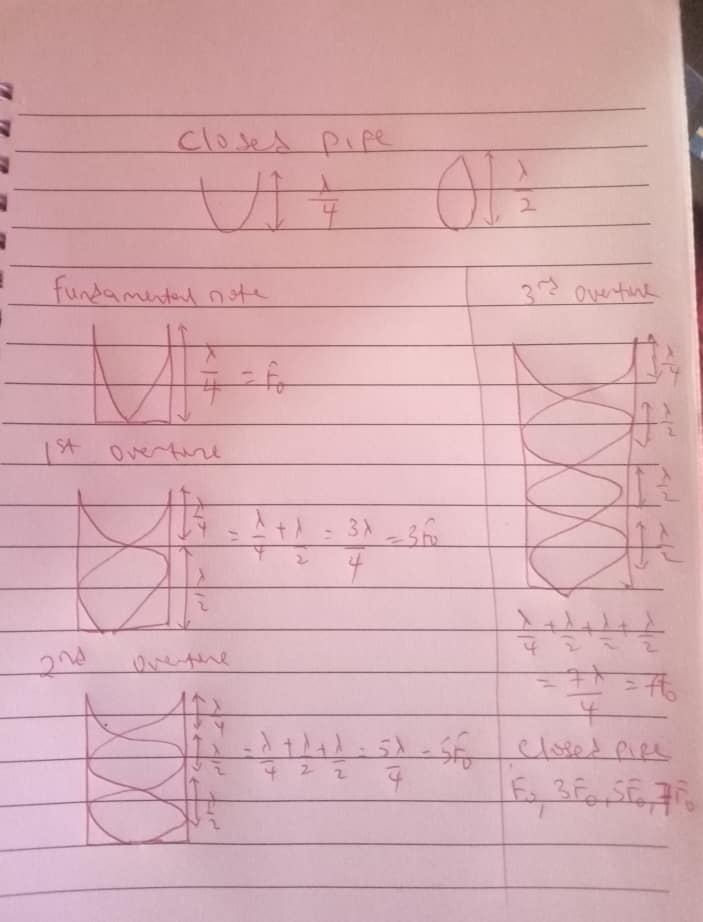
Open Pipe
Stationary waves set up in an open pipe have antinodes at both ends. When both ends are open, it is called a open pipe. The fundamental or simplest mode of vibration is that in which the midpoint is a node. Therefore in an open pipe the harmonics present are, f0, 2f0, 3f0, 4f0, etc that is, both odd and even harmonics are present as overtones.
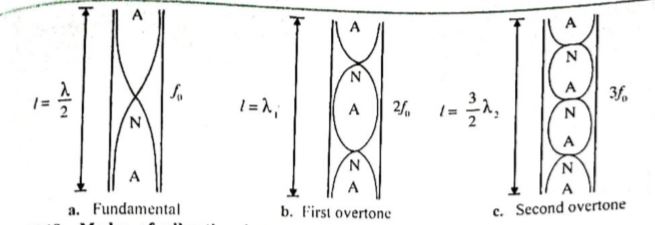
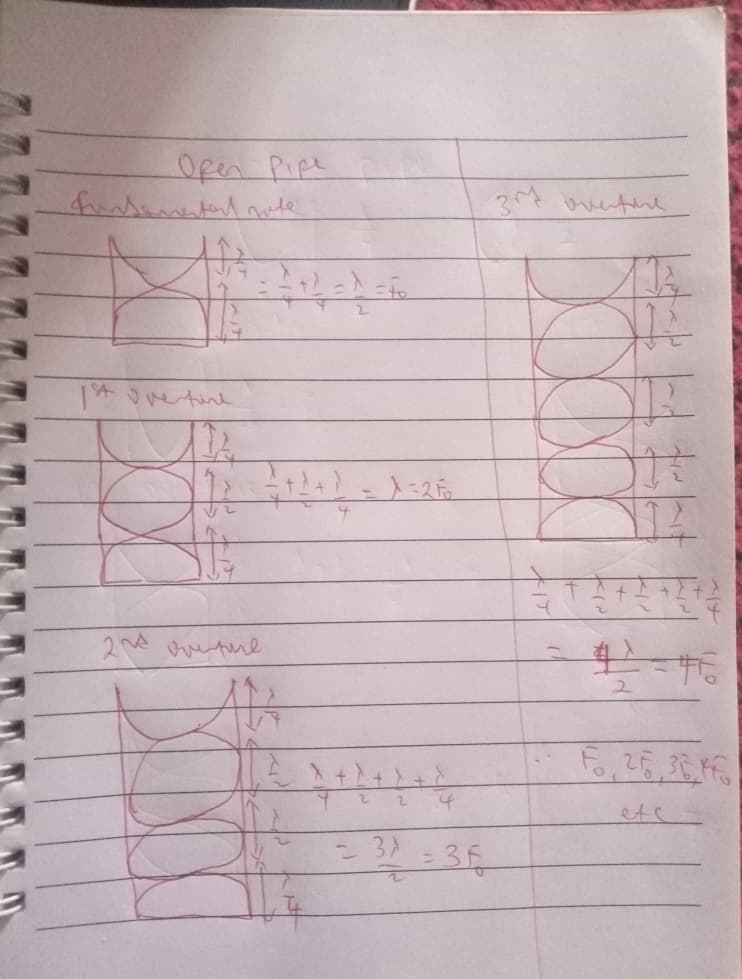
More Explanation
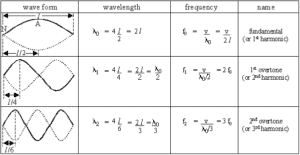
For the first waveform: it is the first harmonic or the fundamental

for the second waveform: it is the second harmonic or the first overtone

for the third waveform: it is the third harmonic or the second overtone

Pipes closed at one end and pipes open at both ends of a stationary waves
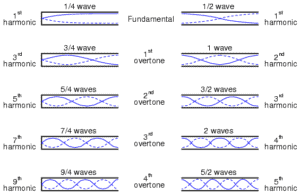
pipes on the left hand side are open at one end
For the first harmonic

pipes on the right hand side are open at both end
For the first harmonic

Read: Note on stationary waves
